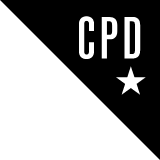Learn how charities engage the public with personal storytelling
Compelling real-life case studies are a powerful way for charities to engage the public but there is skill to telling these stories with kindness and impact.
When she visited the ‘Jungle’ refugee camp in Calais in 2015, fashion worker Jaz O’Hara was shocked by the personal journeys of some of the people she met: an Afghani man who became so hungry on his walk to Europe he ate grass, or the Sudanese migrant who lost his parents and family and cried whenever he uttered the word ‘family’.
O’Hara decided to mention some of these stories on a Facebook post, expecting to raise maybe £50, or even a few donations of tents or sleeping bags.
She woke up the following morning to find 65,000 people had shared the post. The well-wishing didn’t stop there: within a few weeks, O’Hara’s appeal had raised £150,000 and received so many donations they had be stored in several London warehouses.
At the time, the UK media was largely apathetic to what these migrants and refugees may have endured to reach Europe, focusing on the Syrian war instead. Yet, as O’Hara’s post showed, few things are more effective in tugging people’s heartstrings and getting them to open their purse-strings than the visceral power of a human-driven story.
“There wasn’t much in the news talking about refugees telling their personal stories,” says O’Hara, who founded the Asylum Speakers platform the same year. “What I came to realise was that [as storytellers] we needed to get to the root of the issue and that in the UK there’s lots of misinformation; people weren’t understanding why people were leaving their countries to come to the UK.”
But telling these stories be a difficult plough to furrow for charity PRs, particularly given these people may have endured unimaginable hardships and trauma: violence, war, disease, sexual abuse. Telling their stories in a sensitive way which simultaneously upholds their dignity, while also being compelling enough to resonate with the media and public, can be a tricky art to navigate, as Influence discovers here…
How charities find case studies
Many charities have dedicated ‘stories managers’ responsible for sourcing and telling real-life stories, who also work with the media to help share them.
Janet Kipling is case studies lead at Leukaemia UK, where she finds the research charity’s social media comments sections are a good source for potential stories.
“Some people comment on our social media posts and clearly have stories to tell about their experiences with leukaemia, so I’ll send them a direct message,” she says. “We also put out appeals for stories on email and social media, as well as spotting stories elsewhere in the media and following them up.”
Before approaching these people, charities will need to exercise due diligence and safeguarding, adds Kipling. “If there’s any active legal action, for example an inquiry into the death and the role of hospital or doctors, we can’t share the story until that’s concluded. We also have a safeguarding duty to make sure anyone we deem too vulnerable isn’t used in media or on our social channels.”
A step-by-step guide for telling case study stories
Many people who have undergone harrowing experiences may feel overwhelmed when a stranger from a charity forces them to relive the trauma by bombarding them with questions.
For Leukaemia UK, the first step is to make case studies feel psychologically safe and give them some control. There’s a consent form to sign, while they’re also given the option to use a pseudonym and disguise the identity of their location/hospital.
As for the storytelling, it begins for Leukaemia UK with a ‘Tell Your Story’ form, with questions about symptoms, diagnosis and treatment. “This usually flags up a theme, such as people not being given simple blood tests by their doctors,” says Kipling.
A phone conversation is then arranged, which can last anything from 20 minutes to an hour-and-a-half.
When it comes to eliciting an emotional response, however, nothing works better than using the power of silence as an interview tactic.
“I just let people talk: frequently I don’t need to ask very much and go with the flow,” says Kipling. “Some people give a list of dates and facts; others want to emphasise how they remain positive or funny things that happened in hospital that kept their spirits up.”
However, demonstrating empathy or being “able to read the room” is an essential skill for stories managers. “I don’t think people expect to speak with someone who’s been through the same thing, but they should certainly expect to be listened to – really listened to.”
To make interviewees feel comfortable, Columbia University’s Dart Center for Journalism & Trauma suggests asking questions/responses such as “What would you like to tell me?”, “What happened?” or “That must have been very hard for you…” rather than battering subjects with the slightly patronising “How did that make you feel?”
During the conversation with the case study, media-friendly angles might emerge. Kipling recently spoke with an A&E doctor who was diagnosed with leukaemia after receiving some blood tests and told to visit A&E. “The doctor who became a patient in a split-second is such as strong story for journalists,” says Kipling. “It’s important to have a new sense when speaking to people to pick out any angles that would make a compelling press release.”
Tales of endurance and overcoming adversity also work well, says O’Hara. “Many of our speakers have a story about resilience, or navigating challenges, such as an Eritrean who hid underneath the Eurotunnel train to teach the UK when he was 12. This leaves people feeling inspired and motivated.”
Prepping the real-life story for media
Leukaemia UK gives its case studies full sign-off of the finished story. The medical details of the story are also fact-checked by Leukaemia UK’s research communications manager, because, as Kipling says, “it’s such a complex disease with so many different types that they are always drug names or subtypes or disease progressions that I need to clarify.”
Some journalists may wish to interview the case study. Leukaemia UK sends the case study a briefing document beforehand, with Kipling adding, “We always make clear to our storytellers that they’re not expected to be an expert in leukaemia: we have spokespeople for that. The main thing is that they’re able to talk from the heart. And that, maybe together with one impactful statistic such as the number of patients diagnosed in A&E, that’s what the listener or reader remembers.”
Photography and images
Photos which are hard-hitting and tell a story are likely to have the biggest impact, says Kipling.
“Overall, we’re looking for the most powerful images that demonstrate how gruelling leukaemia treatment is and what they’ve lost or overcome. Some people have put together what amounts to an amazing visual diary of how they looked through every stage of chemotherapy, hair loss and stem cell transplant. Also, if the storyteller is talking about a loved one they’ve lost, I like to see photos of them in happier times – with family, pets or on holiday.”
Case study after-care
Once the story has been picked up by the media, Leukaemia UK will share any coverage with the case studies, contacting them regularly to check on treatment.
“It’s important once we’ve put their story on the website and maybe shared it in the media, that our case studies aren’t forgotten – I want to make sure it’s an ongoing partnership,” says Kipling. “Often, they come back with happy life updates, which sometimes creates a fresh angle which we can reshare on social media. But sometimes sadly we discover they have relapsed and occasionally I’ve been contacted by a relative to give us the awful news they’ve died. This is the reality of leukaemia.”
How charity PRs can look after their mental health
In the same way that doomscrolling negative news stories on social media can lead to feelings of anxiety and despair, constant exposure to distressing stories may take an emotional toll on those stories managers/PRs tasked with telling them.
“I find I have to shield myself from some of the news, rather than getting sucked in,” says O’Hara. “However, knowing what many people have been through and that I’ve never had to think about survival in the way they do, means I feel a responsibility to do what I can to advocate for these people. It’s the least I can do.”
“So many stories stay with me,” adds Kipling. “Danae now starting her final year at university. Little ‘Billie the brave’. Leila who’s just starting her first solicitor job after having to park her career-change because of her leukaemia… The sad ones as well – Luke, Marsha and Alice who we said goodbye to…”
“But you quickly learn you can’t take it all on board. I’m not a leukaemia researcher, but I can certainly use my skills to contribute to the incredible work of these organisations. That feels good and carries me through. However, sometimes I have to switch off, go for a walk and appreciate what I have and the moment right now.”
How telling distressing stories can help PRs develop empathy skills
“It really feels like an honour to sit in the same space as somebody sharing these stories,” says O’Hara. “Yes, you can read an article or watch a movie and feel something, but unless you’re sitting face-to-face with somebody who’s experienced this, that’s where the real empathetic shift comes in.”
“People always say to me, ‘Oh you’re talking to people with cancer, isn’t that really depressing?’” says Kipling. “It really isn’t. All of them are inspiring. Every single one. Most of all, I’ve had my mind opened to how people can come through the most terrible times and how strong the human spirit is. I’m so grateful to have been trusted with this incredible piece of work and to have met all these amazing people.”
- Asylum Speakers has partnered with Inhabit Hotels to host a series of talks highlighting the personal journeys of migrants. The events will take place in London throughout 2025.
Explore the psychology of storytelling and learn to tell your organisation's stories with impact at the CIPR's Storytelling course, taking place online on 3 April.
 Christian Koch is an award-winning journalist, editor, content strategist and brand consultant.
Christian Koch is an award-winning journalist, editor, content strategist and brand consultant.


